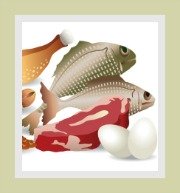Cat Litter
Making the Right Choice
In days gone by, before the advent of commercial cat litter brands, cat owners used large, flat cardboard boxes filled with garden soil, river sand or ashes.
Whilst this sufficed, there was obviously a need for a more
hygienic scoopable litter box filler that required less frequent
changing.
In an ideal world, your cat would probably prefer relieving itself in the privacy of a secluded, escape-proof garden with ample dry, soft grainy soil. (A cat's natural instinct is to dig a hole, deposit urine and feces and then cover it up).
Cats are meticulously clean, so a 'toilet' of this size would satisfy their hygiene needs and also disguise their whereabouts from other inquisitive cats. So, in our opinion - this is the best kitty litter box.
Enter Kitty Litter! In the 1940's the first, non-clumping clay cat litter was introduced by Edward Lowe.
The discovery happened quite by chance, when a customer inquired whether their company, who produced industrial absorbents, had anything that she could use for her feline's litter tray.
Today there are a plethora of brands available. Each has its pros and cons.
It is our intention to provide you with sufficient information on the cat products out there and for you to decide what's best for your kitty.
We have spoken to many cat owners and veterinarians about this subject and combined with our own experience, we are able to
provide you with valuable information that will assist you in choosing
the best litter box filler.
types of kitty litter
|
available in paper, wood, plant and referred to as organic litter also known as silica gel or silica pearl litter traditional - clumping or non-clumping |
 |
considerations
Before making a choice, you should consider the following:
- The effect the product will have on your cat's health
- Your cats preference (if kitty doesn't like it she won't be using it)
- The effect the product will have on the environment
- The effect on your health and that of your family
feline litter features
Whilst
researching the subject we realized that every cat-lover should have a
criteria for judging and selecting a cat box filler:
- The texture and consistency needs to mimic natural sand as close as possible
- Made from a substance that keeps dry and clean and is easy for your cat to dig in
- Scoopable, meaning the clumps don't break up when you remove it from the cat box
- Free of artificial dyes
- Odorless meaning that
it should be free of perfume and chemicals. (Keep the kitty litter box
clean and there is no need for deodorizers).
- Biodegradable, environmentally friendly, preferably made from a renewable resource and should, if possible be flushable
- Dust-free or dust should be at an absolute minimum (prevent respiratory problems and reduces tracking)
- The right weight and texture to reduce tracking. (the lighter and fluffier it is, the more tracking you will have)
- Easy to maintain and clean.
- Safe and not cause adverse health problems for the cat or the family
- From a reputable company that labels their brand and lists the ingredients
- Easily accessible and available in trial packs to allow you to experiment with and find the right product for your cat
- Affordable

Related Pages:
Cat urine
odor is unpleasant - here is some excellent advice on how to deal with
the problem.
Top of Cat Litter Page
search our site
please like us
share our site
recommend on google
popular pages






